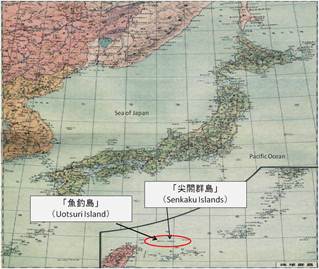Contribution of Ambassador Ishikawa to the The Mark News
I have been asked by The Mark’s editor to outline the position of the Government of Japan regarding the Senkaku Islands in the East China Sea. Japan’s position is quite clear and simple: there exists no issue of territorial sovereignty to be solved regarding the Senkaku Islands. They are clearly an inherent part of the territory of Japan. Historical fact and international law make this abundantly clear.
In fact, China has never claimed sovereignty over the Senkaku Islands until the early 1970s. This was shortly after a United Nations agency published a report in 1968 outlining potential petroleum resources in the area surrounding the islands. Prior to this, there had never been any objection expressed by the then-Republic of China or the People’s Republic to Japan’s sovereignty over the Senkaku Islands. In an article published January 8, 1953 in the People’s Daily (the Chinese Communist Party’s official newspaper) it was noted that the (Japanese) Ryukyu Islands “consist of 7 groups of islands; the Senkaku Islands, the Sakishima Islands, the Daito Islands, the Okinawa Islands, the Oshima Islands, the Tokara Islands and the Osumi Islands”. Furthermore, the maps published in China in 1933 and 1960 also show the Senkaku Islands as part of Japan (a copy of the 1960 map is attached herewith).

The San Francisco Peace Treaty, signed in 1951 after World War II, legally determined the post-war boundary of Japan’s territories and constitutes the foundation of international order after the war. The Treaty was drafted based on the outcome of thorough surveys conducted by the Allied Powers from historical and legal viewpoints in an occupied Japan between 1945 and 1952. It was therefore not Japan itself but the Allied Powers including Canada which determined the post-war Japanese boundary.
In Article 2 of the Treaty, Japan renounced sovereignty over Formosa (Taiwan) and the Pescadores, which had been ceded by China following the Sino-Japanese War. The Senkaku Islands were NOT considered to be part of Taiwan or the Pescadores but as part of the territory that had belonged to Japan prior to the Sino-Japanese war. Under Article 3 of the Treaty, the Senkaku Islands were deemed to be part of the
Japanese Nansei Archipelago and were placed under U.S. trusteeship. They were reverted back to Japan in 1972.
Originally, Japan acquired the Islands peacefully and lawfully based on the principle of terra nullius (No Man’s Land), an established method of acquiring uninhabited islands under international law. As a result of careful and thorough surveys of the Islands beginning in 1885, it was confirmed that the Islands have no trace of having been under the control of China or any other sovereign nation. Based on this confirmation, the Government of Japan incorporated the Islands into the territory of Japan in January 1895.
The process had nothing to do with the settlement of the Sino-Japanese War by the Treaty of Shimonoseki, which was signed in April 1895 and came into effect in May 1895. Taiwan and the Pescadores were ceded to Japan by China pursuant to the Treaty of Shimonoseki but the Senkaku Islands were not. Allegations that Japan obtained the islands as a result of the Sino-Japanese War of 1894 have no factual basis.
Therefore, from the legal point of view, the Japanese Government decision in September this year to purchase the islands was nothing more than a simple transfer of property ownership from a Japanese citizen to the government. As a domestic commercial transaction it has no relevance whatsoever to the international status of the islands. Let me also point out that the ownership of three of the Senkaku Islands have shifted over time: they had belonged to the government until 1932, then a private citizen acquired them, and the government has decided to reacquire them this time. Hence the act of purchase is nothing new. Moreover, the Government of Japan has consistently retained ownership of Taisho Island, which is also part of the Senkaku Islands.
We highly regret that China has been showing excessive reactions to this transfer of ownership. It has continuously sent government-owned vessels around territorial waters of the Senkaku Islands. In mid-September, mobs suddenly appeared on the streets in numerous regions in China, committed acts of violence, arson, looting and vandalism directed at Japanese diplomatic missions and businesses, then suddenly disappeared as if entire acts were choreographed. Needless to say, such acts of violence are never to be condoned in a community of civilised nations governed by the rule of law.
The Japan-China relationship is one of world’s most important bilateral relationships. China is Japan’s largest trading partner while Japan is China’s second largest. Over 3.7 million Japanese visited China and nearly 1.7 million Chinese visited Japan in 2010. We also have more than 660 commercial flights in a week connecting cities of Japan and China. Japan does not wish to see the Senkaku issue adversely affect this relationship. From the outset, we have been dealing with developments in a calm and reasoned manner.
An amicable relationship between Japan and China is essential for the peace and stability of the entire East Asia and of the world. For that purpose, rules and reason should prevail over forces and threat. Japan, as a peace-loving nation based on fundamental values such as respect for human rights, parliamentary democracy and the rule of law, will remain firm on this issue but continue to act with a cool head.
For more details on the Senkaku Islands, please click here:
To visit The Mark News website, please click here. |
